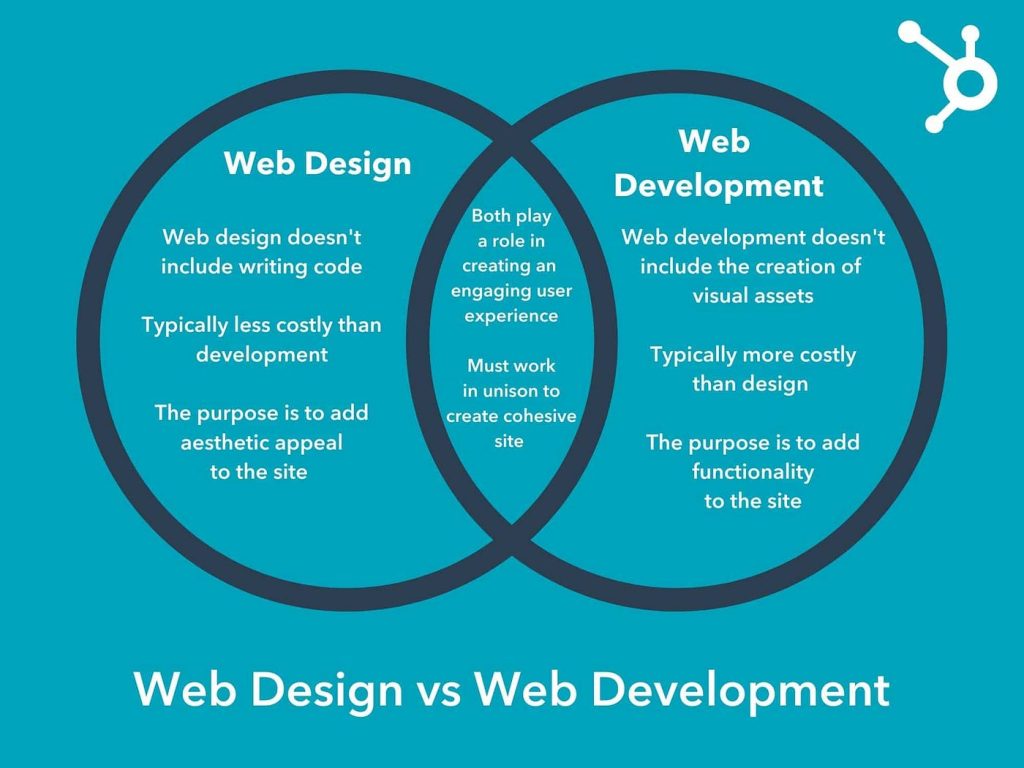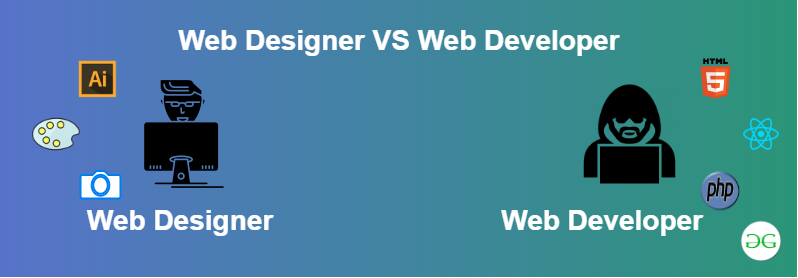The value of web development for creating scalable websites
Finding the Uses of Web Layout for Enhancing Customer Experience
Website design substantially affects individual experience throughout electronic platforms. By concentrating on customer needs, designers produce websites that are not just visually attractive but obtainable and additionally practical. Secret components such as responsive layout and user-friendly navigation play important roles in enhancing usability. However, the challenge depends on comprehending how these elements engage to meet developing individual expectations. The exploration of these factors reveals insights that can transform digital engagement.
Understanding Customer Needs and Expectations
How can Web developers efficiently align their creations with user requirements and expectations? To achieve this, developers need to participate in complete individual research study to catch the choices, actions, and pain factors of their target audience. Utilizing techniques such as surveys, interviews, and functionality testing, developers gather useful insights that direct their decision-making process.
Developing individual personalities can better help in imagining various individual sectors, guaranteeing that style options reverberate with genuine individuals. Additionally, developers should prioritize intuitive navigating and clear phone call to activity, which assist in seamless communications.
The Importance of Responsive Style
As users progressively access websites on a variety of gadgets, responsive style has actually come to be crucial for developing a positive user experience. This strategy enables website to adapt seamlessly to various screen dimensions, ensuring that material is conveniently legible and navigable, despite whether a user gets on a desktop, tablet computer, or smart device.
Responsive layout enhances functionality by giving a regular experience, reducing the need for extreme scrolling or zooming. In addition, search engines favor responsive web sites, which can boost a website's exposure and reach. This style method additionally streamlines growth efforts, as it removes the demand for several variations of a site tailored to details gadgets.
Including receptive layout not only satisfies user expectations however likewise lines up with modern Web requirements, promoting involvement and complete satisfaction. Inevitably, it indicates a commitment to accessibility and inclusivity, critical components for any type of successful on the internet existence.
Developing User-friendly Navigating
A reliable website design not only includes responsive designs yet likewise prioritizes instinctive navigation, which is important for directing customers via an internet site effortlessly. Instinctive navigation guarantees that users can quickly locate info without unneeded effort. Crucial element include a clear menu framework, logical categorization of material, and recognizable icons or tags.
Consistency in navigating placement throughout different web pages fosters knowledge, improving user convenience. Making use of breadcrumb trails enables users to track their place within the site, helping in backtracking and expedition. Additionally, optimizing navigation for mobile gadgets is fundamental, as lots of users access web sites via smartphones and tablets.
Integrating a search bar can additionally enhance the customer experience, enabling quick access to details web content. Generally, instinctive navigating decreases disappointment, motivates longer site gos to, and inevitably results in higher user fulfillment and interaction. By concentrating on navigation design, Web designers can greatly enhance the total user experience.
Utilizing Aesthetic Hierarchy Efficiently
Efficient website design hinges on the tactical use aesthetic hierarchy, making sure that users can effortlessly navigate content and understand the most essential information at a glimpse. By prioritizing elements based on their relevance, developers can direct customers' focus toward crucial areas, such as headlines, calls-to-action, and important images.
Techniques such as size, contrast, positioning, and shade play crucial roles in developing this power structure. For instance, bigger text typically represents better importance, while contrasting colors can attract attention to crucial activities. Additionally, regular placement and spacing assistance create an organized layout, making it much easier for users to refine information swiftly.
Additionally, including imagery purposefully can improve understanding and retention of web content. When used effectively, a well-defined aesthetic pecking order not only enhances functionality but additionally improves the general individual experience, enabling users to engage meaningfully with the site's goals.
Enhancing Readability and Accessibility
Visual pecking order greatly impacts just how individuals communicate with an internet site, however just as vital is guaranteeing that material stays readable and available to all target markets. Efficient Web design utilizes clear typography, including appropriate typeface sizes, line spacing, and contrast to improve readability. The use of high-contrast color design can help those with aesthetic disabilities, while bigger text dimensions benefit users with reading problems. Additionally, integrating alt text for images guarantees that people using screen visitors can access critical information.
Designers ought to also think about the design and framework of web content, utilizing headings and bullet indicate separate big blocks of text. This not just aids skimming yet also aids individuals with cognitive disabilities. Eventually, prioritizing readability and access fosters an inclusive setting, permitting varied audiences to engage completely with the internet site's web content (branding). By resolving these aspects, Web designers can significantly improve the general individual experience
Incorporating Engaging Aesthetic Components
Including appealing aesthetic components is necessary for improving customer experience in Web layout. Shade psychology plays a significant duty in affecting users' emotions and behaviors, while interactive graphics can capture attention and urge expedition. Together, these elements produce a much more vibrant and appealing online environment.
Significance of Shade Psychology
The importance of shade psychology in Web style can not be overemphasized, as it plays a crucial function fit customer understandings and behaviors. Shades evoke emotions and can affect exactly how customers interact with a web site. Blue often communicates trust fund and professionalism and reliability, making it a popular selection for economic establishments. Alternatively, red can activate urgency and enjoyment, often used in sales promotions. Comprehending the psychological impacts of shade allows developers to develop a natural visual experience that resonates with customers. In addition, regular color pattern boost Web Site brand identification and recognition, making sure users link specific shades with particular brand names. Ultimately, thoughtful application of shade psychology can substantially enhance user engagement and satisfaction, making it an essential aspect of reliable Web layout.
Making Use Of Interactive Graphics
Engaging individuals with interactive graphics can substantially boost their total experience on a website. These aspects, such as animations, infographics, and clickable visuals, cultivate a deeper link in between individuals and the content. By urging expedition and engagement, interactive graphics can make complex details more absorbable and preserve customers' focus longer. Furthermore, they supply a possibility for individuals to communicate with the site in a meaningful way, leading to increased fulfillment and a higher probability of returning. It is vital to balance interactivity with use; excessively complex graphics may confuse individuals. Effectively applied, interactive graphics can change an easy watching experience right into an interesting journey, inevitably adding to enhanced user experience and website efficiency.
Constant Examining and Renovation Strategies
Continual screening and improvement approaches function as important components in optimizing Web layout for individual experience. By implementing repetitive testing, designers can gather real-time feedback on customer communications, enabling them to identify pain points and areas for improvement - web development. A/B testing, functionality testing, and warm mapping work techniques that supply insights into user behavior, making it possible for enlightened layout choices
Moreover, these methods motivate a culture of ongoing refinement, instead than a single launch. Web designers can make use of analytics devices to keep track of performance metrics, such as bounce rates and conversion prices, which assist needed adjustments. Regular updates based upon customer responses not only boost functionality but also foster individual satisfaction and loyalty.
Eventually, constant screening and improvement develop a receptive Web design environment where individual experience is focused on, making sure that the site evolves together with customer demands and technical advancements. This positive method results in a much more efficient and engaging online presence.
Regularly Asked Inquiries
Exactly How Can Shade Psychology Impact User Experience in Web Style?
Shade psychology significantly affects user experience in website design by directing and evoking feelings behavior. Different colors can produce associations, improve readability, and impact customer interaction, eventually shaping perceptions of a brand name or site's functionality.
What Function Does Typography Play in User Interaction?
Typography greatly affects user interaction by improving readability, establishing directory power structure, and sharing brand character. Efficient font style selections can capture interest, stimulate emotions, and guide users via material, inevitably improving total interaction and satisfaction with the web site.

Exactly How Do Social Distinctions Affect Website Design Preferences?
Social differences significantly influence Web style preferences, impacting color selections, layout, navigation, and imagery styles. Recognizing these variations allows designers to produce more interesting and relatable experiences customized to varied individual histories and expectations.

What Tools Can Help Test Individual Experience Efficiently?
Numerous devices, consisting of Google Analytics, Hotjar, and UsabilityHub, successfully test customer experience. These systems offer understandings into user behavior, promote A/B testing, and collect responses, helping designers make educated decisions to boost overall usability.
Just how Often Should an Internet Site Be Redesigned for Optimal Individual Experience?
An internet site must be redesigned every a couple of years to keep ideal user experience. Normal updates ensure the style remains review contemporary, receptive, and aligned with advancing customer needs and technical innovations, improving overall interaction.
Developing customer identities can better assist in picturing different individual segments, making sure that style selections reverberate with real individuals. As individuals progressively accessibility sites on a selection of gadgets, receptive style has actually ended up being important for creating a positive customer experience. Incorporating engaging aesthetic elements is vital for improving user experience in Web design. Eventually, continuous screening and improvement produce a receptive Web style environment where individual experience is prioritized, making certain that the website develops together with individual requirements and technological developments. Shade psychology substantially influences user experience in Web layout by guiding and evoking feelings actions.